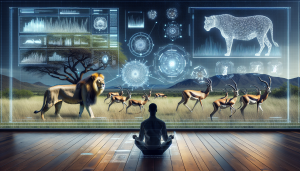 UseCasesFor.ai
UseCasesFor.ai
Choose Topic
 UseCasesFor.ai
UseCasesFor.ai
AI Use Cases
A collection of over 250 uses for artificial intelligence
A continually updated list exploring how different types of AI are used across various industries and AI disciplines,including generative AI use cases, banking AI use cases, AI use cases in healthcare, AI use cases in government, AI use cases in insurance, and more

Sign up
to receive a PDF containing all the use cases and stay updated with the latest AI trends and news (you can always unsubscribe)
Animal behaviour analysis

Introduction
The use of AI has also led to the development of new ways of understanding various systems in nature. Some of the areas that have greatly embraced and benefited from ML, CV, and AI include the wildlife industry especially in animal behaviour analysis. These technologies enable the researchers to observe the animal populations, their activities, and movements and, therefore, design better conservation measures. It is therefore possible to capture and store large data sets, analyse them to detect trends, and produce results that would take ages to achieve by a human.
Challenges
It is, however, important to note that the use of AI in wildlife research and conservation has its drawbacks as well. The first challenge is how to get high quality labeled data that is used to train the ML models. Wild animals are hard to capture and therefore getting a clear image or video of them can be difficult. Second, it also means that the models have to be very general and can handle a wide range of animal species, their actions, and surroundings. Third, there is the question of privacy and ethical considerations in the use of animals in research. How to meet the demands of research while giving due consideration to the animals’ rights is a delicate question. Also, there is the issue of how the technology can be made available and easily used by wildlife researchers and conservationists who may not be technocrats.
AI Solutions
There are a number of AI solutions that are quite advanced in this field. For example, there is AI-based image and sound recognition software that can recognize animals in pictures or voice recordings which may be useful for research on specific animals or their activities. It also has machine learning algorithms that can predict the animals’ movements depending on the environment to assist in the development of conservation plans. There are drones that are fitted with Artificial Intelligence which can access difficult to reach areas and gather vital information on animal numbers and their environment. For example, the Elephant Listening Project based at Cornell University has applied AI in analyzing audio recordings to determine the calls made by elephants hence to manage and save these vulnerable species. In a similar manner, Google’s AI for Social Good has created a model that can recognize humpback whales based on their voices to help in their protection.
Benefits
There are many advantages of AI in animal behavior analysis. It is also fast and efficient in data processing thus enabling researchers to save on time and minimize errors that may arise from human intervention. It can also identify patterns and correlations that may not be easily noticeable to a human eye such as small changes in the animal behavior or complex relationships with the environment. In addition, AI can watch the animals at any time, which makes the observation more comprehensive than when done by people from time to time. Last but not the least, it can assist in the integration of the public in wildlife conservation through sharing of information and making the data understandable.
Return on Investment
There is a number of ways through which the ROI of using AI in wildlife research and conservation can be measured. Besides the time and cost savings, AI can also enhance the efficiency of the conservation measures leading to improved results in wildlife population. It can also aid in generating funds for the conservation by presenting concrete facts on the necessity of the cause. For example, the Conservation Metrics project which is under the Microsoft’s AI for Earth initiative has revealed that AI can cut the cost of biodiversity assessments by 80% while presenting the outcomes 100 times faster.